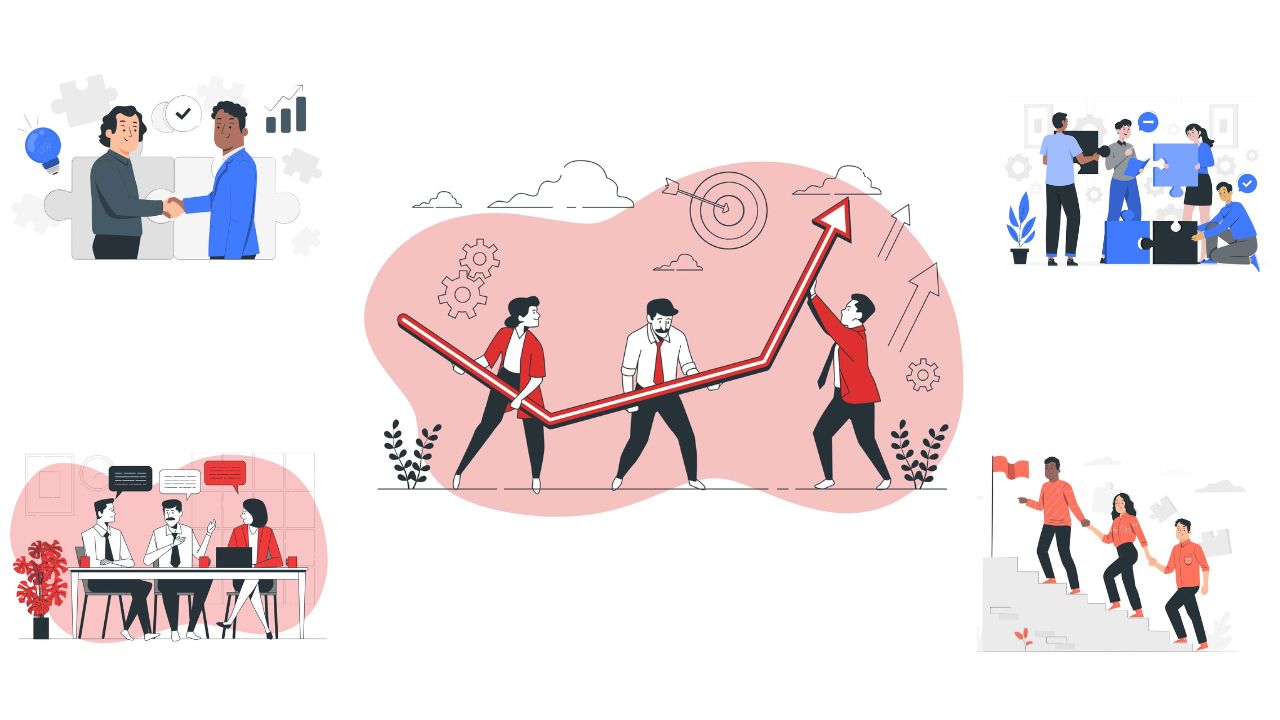Discover the power of mindful leadership and learn how to stay grounded, enhance clarity, and inspire trust within your team. Practical tips for leading with purpose and calm.
The expectations placed on leaders are higher than ever in the fast-paced world of today. Organizations must be able to lead with clarity and purpose as they navigate ongoing change and uncertainty. This is the situation in which thoughtful leadership is useful.
Leaders may motivate their teams to succeed and improve their well-being by implementing mindfulness into their daily practices.

Effective leadership demands more than simply strategic thinking and decision-making in the fast-paced economic world of today. A growing number of leaders are using mindfulness to help them stay grounded, improve their focus, and lead with clarity.
By encouraging self-awareness, emotional intelligence, and present-moment awareness, mindful leadership goes above and beyond conventional leadership techniques.
In this blog, we’ll explore the principles of mindful leadership, why it matters, and how you can incorporate mindfulness into your leadership style to inspire trust and clarity in your team.
What is Mindful Leadership?
Mindful leadership is the practice of being present, aware, and fully engaged in the moment. It combines the principles of mindfulness—such as awareness, focus, and compassion—with the responsibilities of leadership. Mindful leaders cultivate an environment where employees feel valued and heard, fostering a culture of trust and collaboration.

Key Principles of Mindful Leadership

1. Practice self-awareness:
Mindful leaders are deeply in tune with their thoughts, emotions, and behaviors. They take the time to reflect on their inner experiences and how they impact their leadership style and decision-making.
By developing self-awareness, leaders can better understand their strengths, weaknesses, biases, and triggers, and use this knowledge to become more effective and impactful.
2. Embrace the present moment:
One of the hallmarks of mindfulness is the ability to be fully present in the moment, rather than getting caught up in worries about the past or anxieties about the future.
Mindful leaders learn to pause, take a deep breath, and fully engage with the task, whether it’s a critical meeting, a challenging conversation, or a strategic planning session.
This presence and focus can lead to clearer thinking, better decision-making, and more productive interactions with their teams.
3. Cultivate emotional intelligence:
Mindful leadership is not just about managing one’s own emotions; it’s also about being attuned to the emotions of others.
Mindful leaders develop a keen sense of emotional intelligence, enabling them to recognize, understand, and respond to the feelings and needs of their team members.
This empathy and emotional awareness can foster deeper connections, build trust, and create a more collaborative and supportive work environment.
4. Prioritize well-being:
Mindful leaders understand that their well-being is essential to their effectiveness as leaders. They make a conscious effort to prioritize self-care, whether it’s through regular exercise, meditation, or simply taking breaks to recharge.
By maintaining their physical and mental health, mindful leaders are better able to manage the demands of their role and lead with clarity and resilience.
5. Foster a mindful organizational culture:
Finally, mindful leaders recognize the importance of cultivating a mindful organizational culture. By encouraging their teams to practice mindfulness, whether through formal training or simply by modeling mindful behaviors, leaders can create an environment that values presence, focus, and well-being.
This, in turn, can lead to increased productivity, improved collaboration, and a greater sense of purpose and meaning among employees.
How to Practice Mindful Leadership:

1. Start with Self-Awareness:
The foundation of mindful leadership is self-awareness. Set aside time for reflection each day. Check-in with yourself by asking, “What am I feeling right now?” or “How are my thoughts affecting my decisions?” This practice will help you become more aware of how your internal state impacts your leadership.
2. Practice Mindful Breathing:
Mindful breathing is one of the simplest ways to stay grounded. Taking a few deep breaths before responding to a situation can calm your mind, allowing you to act thoughtfully rather than react impulsively.
Encourage your team to do the same in high-stress moments to maintain a composed atmosphere.
3. Cultivate Compassion and Empathy:
Mindfulness naturally fosters compassion and empathy. Take the time to understand your team members on a deeper level.
By being present and showing genuine care, you’ll build stronger relationships and create an environment where everyone feels supported.
4. Lead by Example:
Demonstrate mindfulness in your daily actions. Show your team what it looks like to approach challenges calmly and with clarity. Your behavior will set the tone for the team, influencing them to adopt a similar mindset.
5. Embrace the Present Moment:
Leaders often focus on future goals, but mindfulness teaches us the importance of the present. By staying present, you can focus on what truly matters right now, whether it’s a team member in need or a decision that requires your full attention.
Benefits of Mindful Leadership

Incorporating mindfulness into leadership practices offers numerous benefits:
- Improved Decision-Making: Mindful leaders are less likely to make impulsive decisions. By taking a moment to pause and reflect, they can analyze situations more critically, leading to better outcomes.
- Enhanced Team Engagement: When leaders model mindfulness, it creates a ripple effect within the team. Employees are more likely to adopt similar practices, leading to a more engaged and motivated workforce.
- Reduced Stress Levels: Mindful leadership practices can significantly reduce stress for both leaders and their teams, promoting a healthier work environment.
- Increased Creativity: A mindful approach encourages open-mindedness and creative thinking, allowing teams to explore innovative solutions to challenges.
Strategies for Practicing Mindful Leadership

- Start with Yourself: Begin your journey by integrating mindfulness into your daily routine. Simple practices like meditation, deep breathing, or even mindful walking can enhance your self-awareness.
- Create a Mindful Culture: Encourage your team to embrace mindfulness. Provide resources such as workshops or guided meditation sessions, and set aside time for reflection during meetings.
- Establish Check-Ins: Regular one-on-one check-ins with team members can strengthen relationships. Use this time to listen actively and address any concerns they may have.
- Set Clear Intentions: Before meetings or important decisions, take a moment to set your intentions. This practice helps maintain focus and clarity throughout discussions.
- Practice Gratitude: Incorporate gratitude into your leadership style. Acknowledging the contributions of your team fosters a positive atmosphere and reinforces a sense of belonging.
The 7 Leadership Traits That Inspire Loyalty and Trust in Teams
Conclusion
Mindful leadership is not merely a trend; it is a transformative approach that can redefine how we lead in the modern workplace. By staying grounded and leading with clarity, mindful leaders create a culture of trust, collaboration, and innovation. As we move forward in an ever-changing landscape, embracing mindfulness can help us navigate challenges with resilience and inspire our teams to achieve their best.
In a world where distractions abound, let us commit to being present and leading with intention, creating a ripple effect that empowers others to do the same. By doing so, we not only enhance our leadership effectiveness but also contribute to a more compassionate and engaged workforce.
#MindfulLeadership #LeadershipWithClarity #EmotionalIntelligence #LeadWithPurpose #MindfulnessInWork #StressFreeLeadership #GroundedLeadership
Other Interesting Posts To Read:
Maximizing Productivity: How to Get More Done in Less Time
5 Mindful Practices for Lightning-Fast Decision Making
Mindful Breaks: Recharging Your Energy with Lightning-Fast Pauses


